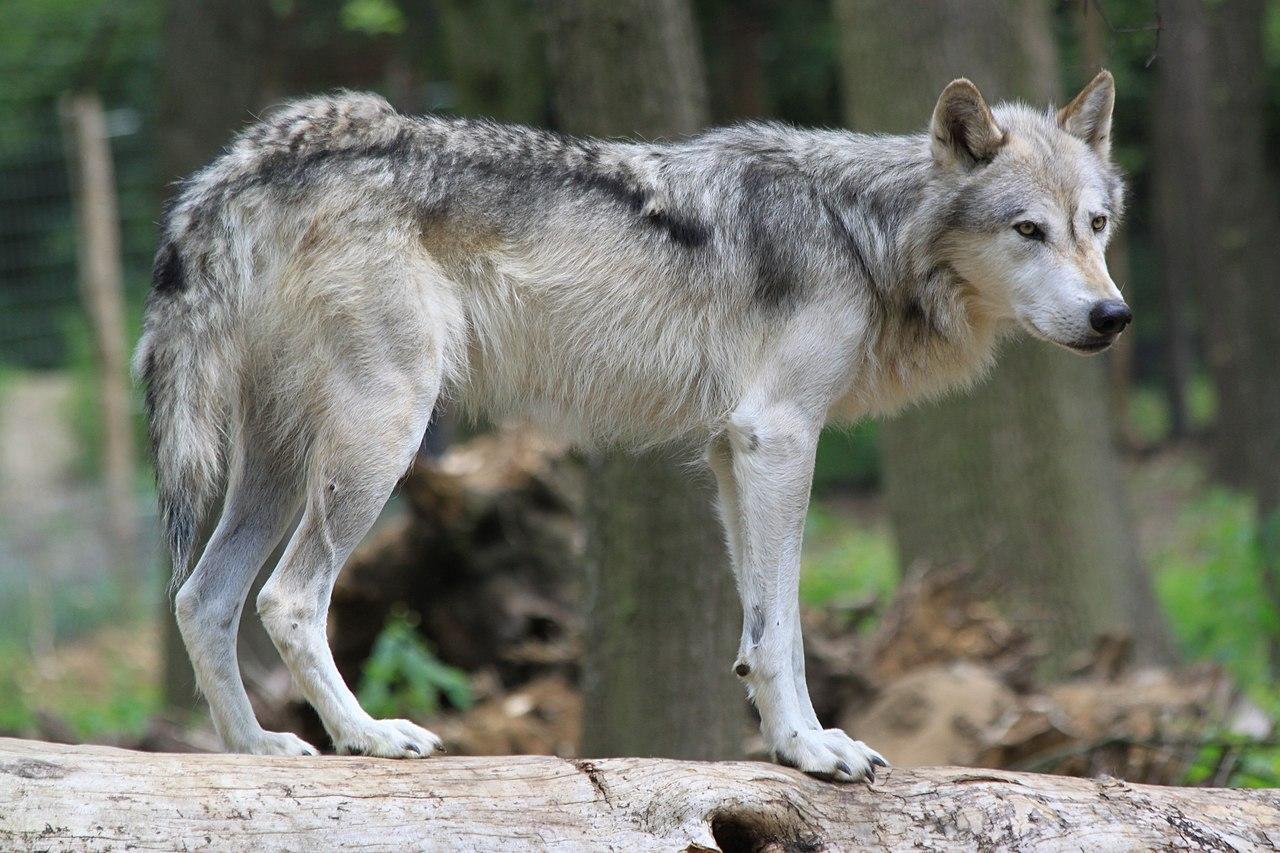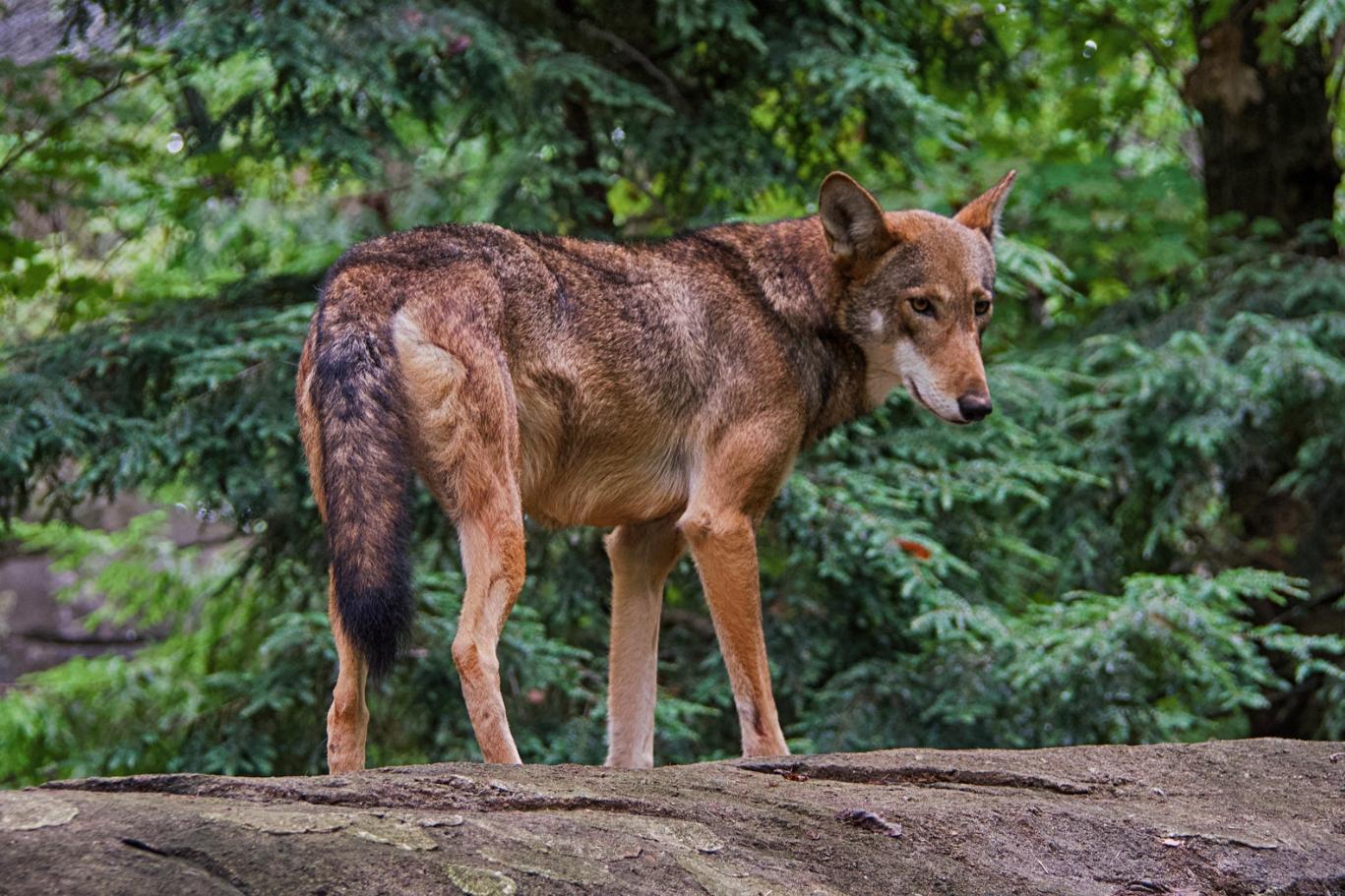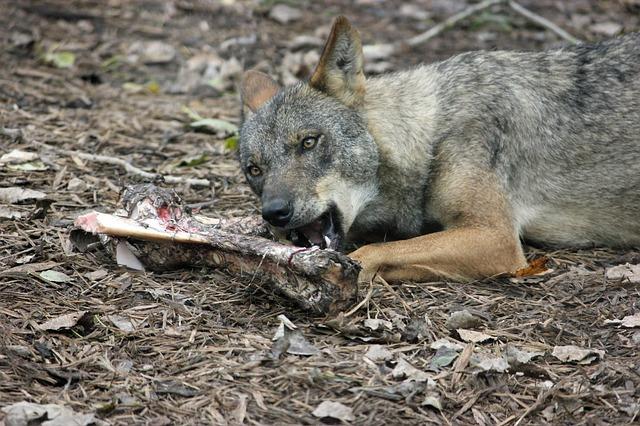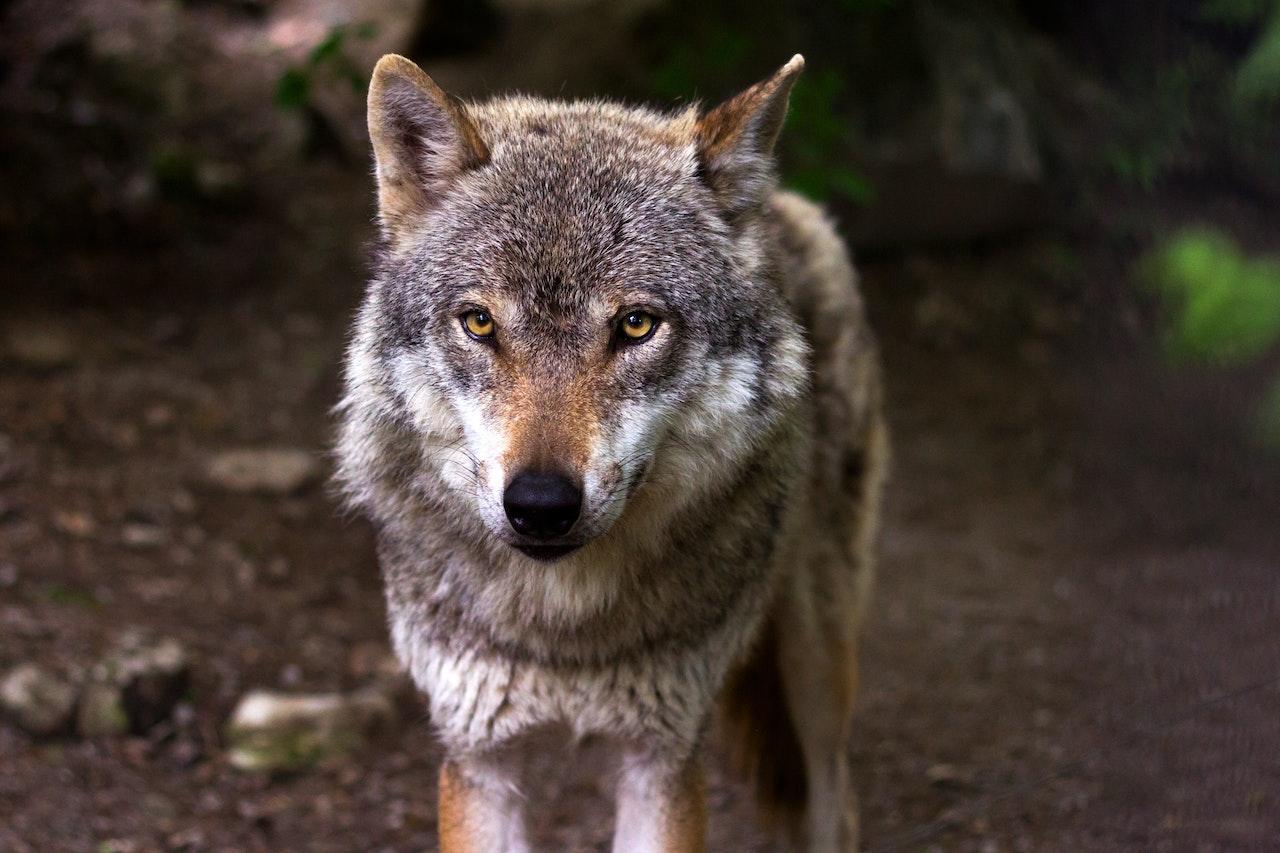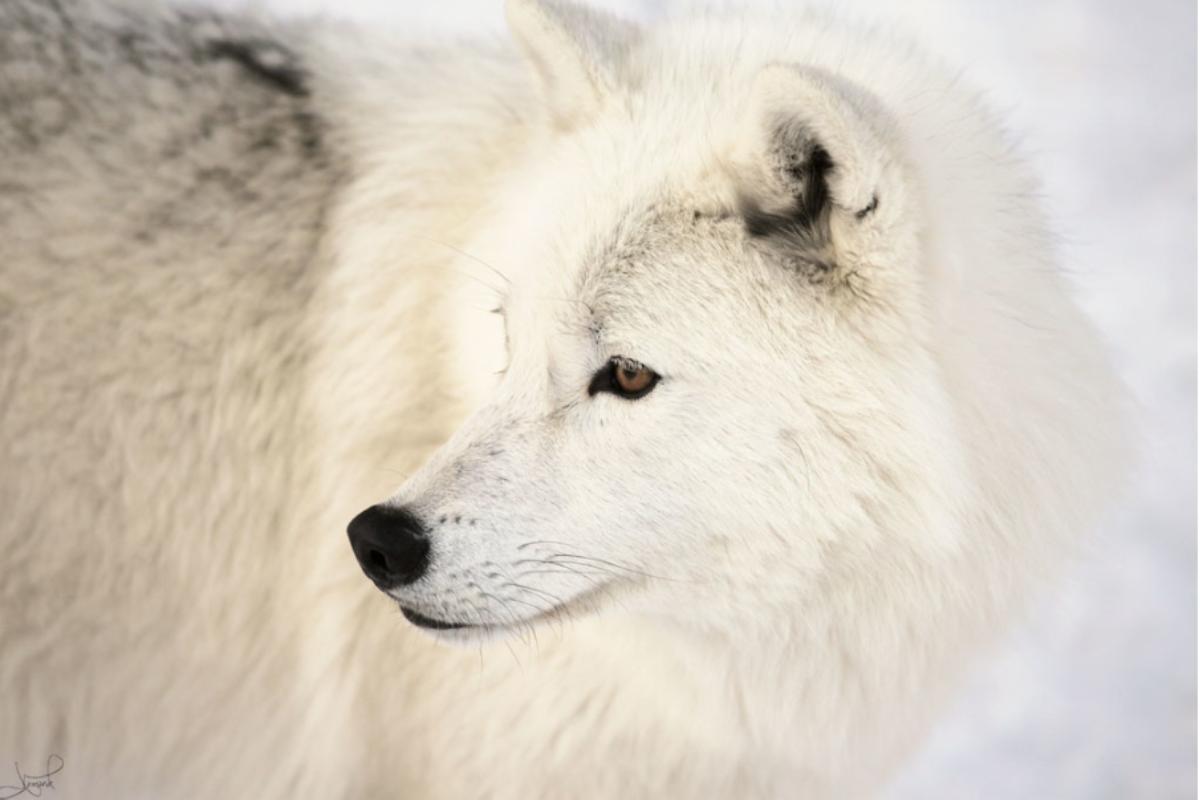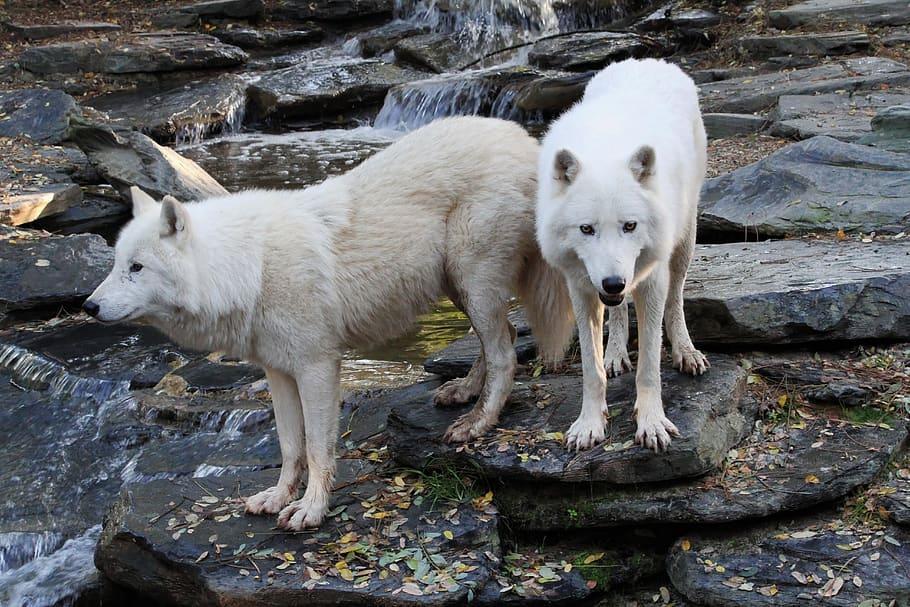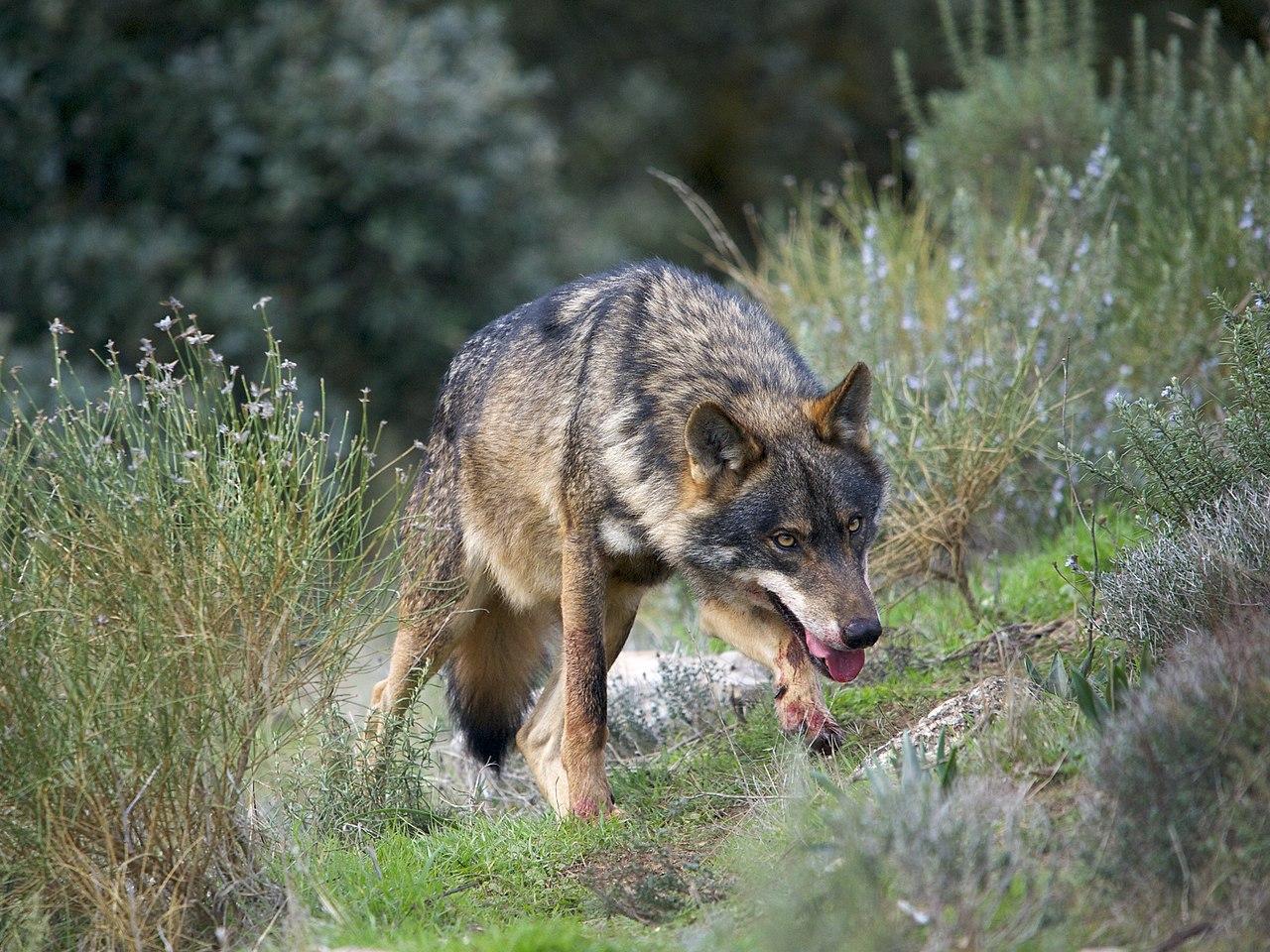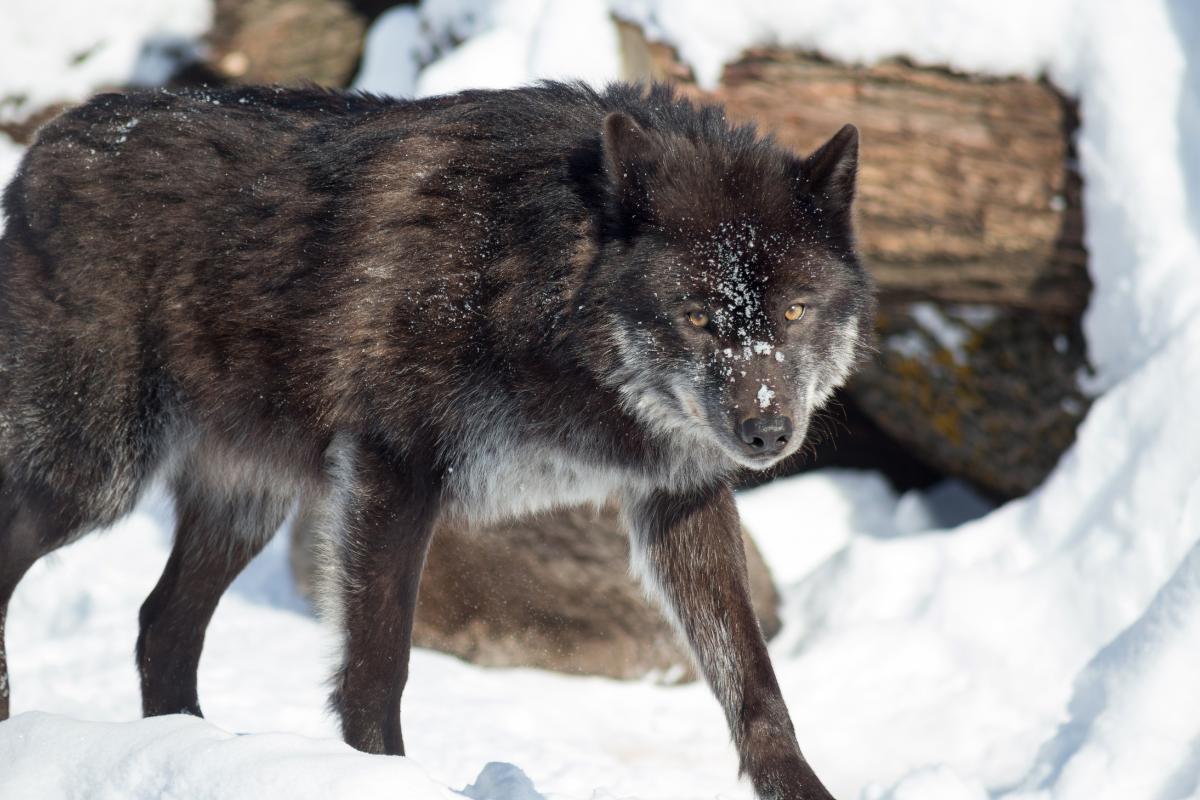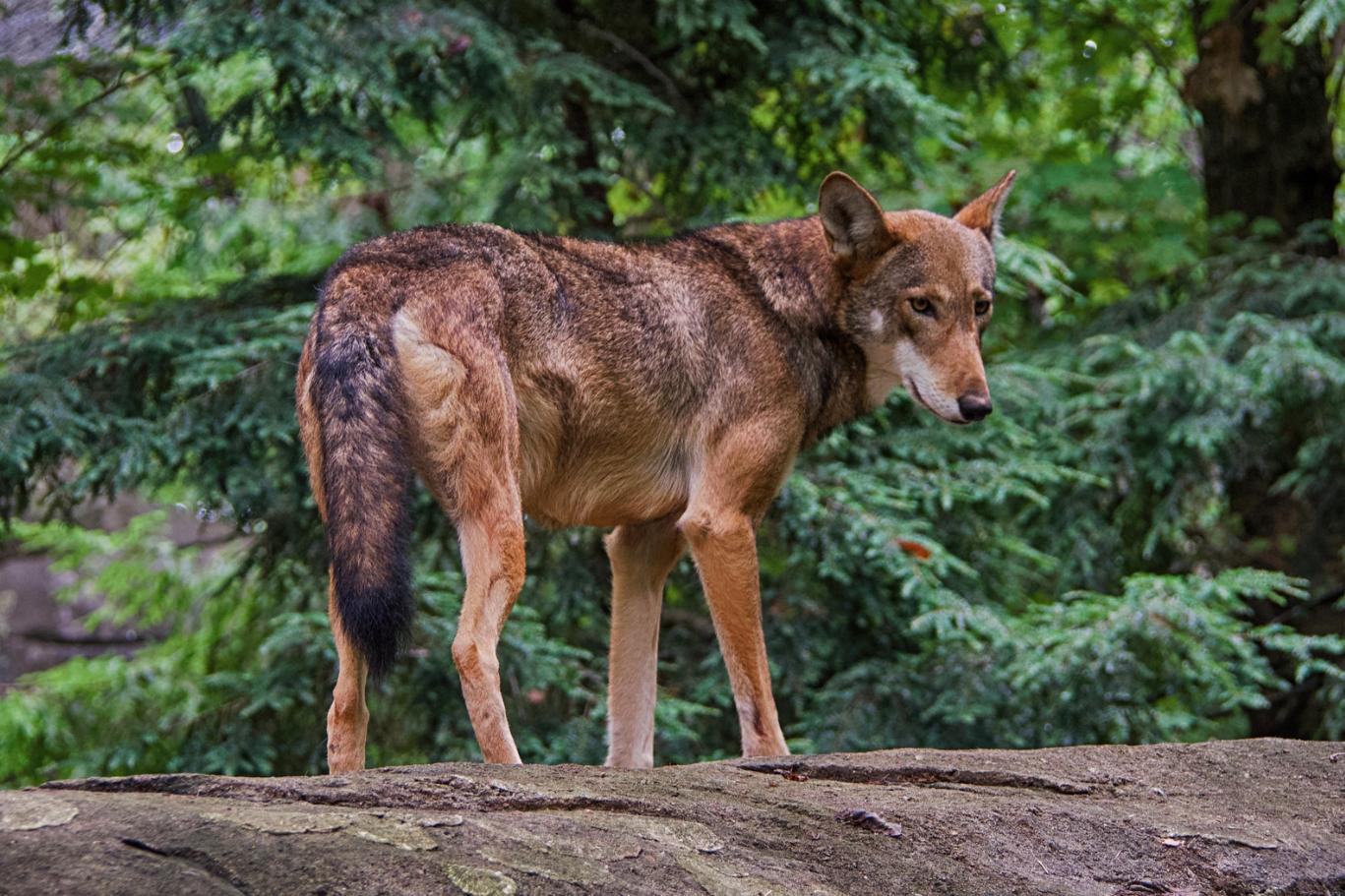What Are the Different Types of Wolves?


In the wild corners of our world, few creatures inspire as much awe, fear, and wonder as the wolf. These magnificent predators, with their piercing yellow eyes and haunting calls, have captivated humanity for centuries. They are the largest members of the Canidae family, and are apex predators in their environment. There are also over 30 subspecies of wolves, which are classified based on their physical characteristics and geographic range.
In the following article by thedailyECO, we will explore the different types of wolves that exist, as well as some of their most popular subspecies. We will also discuss their main characteristics and specific adaptations.
- How are wolves classified?
- Gray wolf (Canis lupus)
- Red wolf (Canis rufus)
- Ethiopian wolf (Canis simensis)
- Eurasian wolf (Canis lupus lupus)
- Arabian wolf (Canis lupus arabs)
- Tundra wolf or Turukhan wolf (Canis lupus albus)
- Arctic wolf (Canis lupus arctos)
- Mexican wolf (Canis lupus baileyi)
- Indian wolf (Canis lupus pallipes)
- Iberian wolf (Canis lupus signatus)
- Interior Alaskan wolf (Canis lupus pambasileus)
- Other sub species of wolves
How are wolves classified?
Wolves are classified within the animal kingdom as follows:
- Kingdom: Animalia
- Phylum: Chordata
- Class: Mammalia
- Order: Carnivora
- Family: Canidae
- Genus: Canis
- Species: Canis lupus
Within the order Carnivora, wolves are part of the Canidae family. This family consists of various canids, including wolves, domestic dogs, foxes, and other closely related species.
How Many types of wolves are there?
There are three species of wolves recognized by the Integrated Taxonomic Information System (ITIS):
- Gray wolf (Canis lupus)
- Red wolf (Canis rufus)
- Ethiopian wolf (Canis simensis)
Additionally, there are also over 30 subspecies of wolves, each adapted to different geographical regions and environments, some of which will be discussed in more detail below.
However, it is worth noting that some scientists argue that the red wolf is a subspecies of the gray wolf, and that there is only one species of wolf. Others argue that the Ethiopian wolf is a distinct species, and that there are four species of wolves.
Gray wolf (Canis lupus)
The gray wolf (Canis lupus) is the largest extant wild member of the Canidae family. It is a native predator of large parts of Eurasia and North America. Gray wolves are found in a wide range of habitats, from forests and mountains to tundra and deserts. They are currently distributed in Europe, Asia, and North America.
Gray wolves are large canids with a typical head-and-body length of 105–160 cm (41–63 in) and a tail length of 40–50 cm (16–20 in). They weigh between 23 and 80 kg (51 and 176 lb), with males being generally larger than females. Gray wolves have a thick coat of fur that is typically gray in color, but can also be black, brown, or white. Their coat helps to protect them from the cold weather in their northern habitats.
Gray wolves are social animals that live in packs of 6–10 individuals. The pack is typically led by a dominant alpha male and female. The alpha pair is responsible for breeding and defending the territory of the pack.
Gray wolves are apex predators, meaning that they are at the top of the food chain. They play an important role in the ecosystem by helping to control the populations of their prey animals. Their diet consists mainly of large ungulates, such as deer, elk, and moose. They also eat smaller animals, such as rodents and rabbits.
The gray wolf is currently listed as Least Concern on the IUCN Red List of Threatened Species. However, some subspecies of gray wolves, such as the Mexican wolf and the red wolf, are listed as Critically Endangered or Endangered.
You might be interested in this other article, where we explain in detail what ungulates are and their main characteristics.

Red wolf (Canis rufus)
The red wolf (Canis rufus) is a critically endangered canid native to the southeastern United States. It is the world's most endangered wolf, and is closely related to the gray wolf and coyote.
The red wolf is a medium-sized canid. Males measure 136–165 cm (53.5–65 in) in length, comprising a tail of about 37 cm (14.6 in). Adult red wolves range in weight from about 45 to 80 pounds, with males averaging about 60 pounds and females about 50 pounds.
Red wolves are smaller than gray wolves, but larger than coyotes. They have a tawny to grayish coat, with a reddish tint on the muzzle, behind the ears, and on the backs of the legs. Red wolves have a slender build and long legs.
The red wolf is currently listed as Critically Endangered on the IUCN Red List of Threatened Species. The main threats to the red wolf are habitat loss, hybridization with coyotes, and persecution by humans.

Ethiopian wolf (Canis simensis)
The Ethiopian wolf (Canis simensis) is a unique and endangered canid species native to the Ethiopian Highlands. It is the only representative of wolves in Africa and the smallest canid species on the continent.
The Ethiopian wolf is the smallest canid species in Africa. Males weigh 14 to 19 kg (31–43 lb), while females weigh 11–14 kg (24.7–31.2 lb).
Ethiopian wolves are characterized by their reddish-brown fur, slender build, and long legs. They have a distinctive black mask on their face and a black-tipped tail. Ethiopian wolves are also known for their unique vocalizations, which include a variety of yips, barks, and whines.
Ethiopian wolves are carnivores and their diet consists mainly of rodents. They also eat birds, reptiles, and insects.
The Ethiopian wolf is currently listed as Endangered on the IUCN Red List of Threatened Species. The main threats to the Ethiopian wolf are habitat loss, disease, and persecution by humans. Ethiopian wolves are killed by humans in retaliation for livestock predation. They are also hunted for their fur and body parts, which are used in traditional medicine.

Eurasian wolf (Canis lupus lupus)
Eurasian wolf (Canis lupus lupus), also known as the European wolf, is the nominate subspecies of the gray wolf, and is the most widespread subspecies. The Eurasian wolf is found in Europe and Asia. It is the most widespread subspecies of gray wolf, and inhabits a wide range of habitats, from forests and mountains to tundra and deserts.
The Eurasian wolf is a large canid with a typical head-and-body length of 105–160 cm (41–63 in) and a tail length of 40–50 cm (16–20 in). They weigh between 23 and 80 kg (51 and 176 lb), with males being generally larger than females.
Eurasian wolves have a thick coat of fur that is typically gray in color, but can also be black, brown, or white. Their coat helps to protect them from the cold weather in their northern habitats.
Eurasian wolves are also social animals that live in packs led by a dominant alpha male and female. Eurasian wolves are known for their long-distance howls, which they use to communicate with each other and to mark their territory. Their howls can be heard up to 10 kilometers (6 miles) away.
Eurasian wolves are carnivores and their diet consists mainly of large ungulates, such as deer, elk, and moose. They also eat smaller animals, such as rodents and rabbits.
The Eurasian wolf is currently listed as Least Concern on the IUCN Red List of Threatened Species. However, some populations of Eurasian wolves are threatened by habitat loss, poaching, and persecution by humans.

Arabian wolf (Canis lupus arabs)
The Arabian wolf (Canis lupus arabs), is a subspecies of the gray wolf that is native to the Arabian Peninsula. It is the smallest subspecies of gray wolf, and is the only subspecies that is found in the Middle East. It inhabits a variety of habitats, including deserts, grasslands, and mountains. They are very shy animals, and are rarely seen by humans.
The Arabian wolf is a small canid with a typical head-and-body length of 90–110 cm (35–43 in) and a tail length of 30–35 cm (12–14 in). They weigh between 15 and 20 kg (33 and 44 lb), with males being generally larger than females.
Arabian wolves have a short coat of fur that is typically pale yellow or sandy in color. Their coat helps to protect them from the hot climate in their desert habitat.
Their diet consists mainly of small mammals, such as rodents and rabbits. They also eat birds, lizards, and insects. Arabian wolves are apex predators in their environment, but they are also preyed upon by humans and large predators such as hyenas and leopards.
The Arabian wolf is currently listed as Endangered on the IUCN Red List of Threatened Species. The main threats to the Arabian wolf are habitat loss, poaching, and persecution by humans.

Tundra wolf or Turukhan wolf (Canis lupus albus)
The tundra wolf or Turukhan wolf (Canis lupus albus), is a subspecies of the gray wolf that is native to the tundra and forest-tundra zones of Eurasia from Finland to the Kamchatka Peninsula.
It is a large subspecies, with adult males measuring 118–137 cm (46.5–54 in) in body length, and females 112–136 cm (44–53.5 in). Although often written to be larger than C. l. lupus, the Eurasian wolf, there is no significant difference in overall size and weight between the two subspecies.
Tundra wolves have a thick coat of fur that is typically white or gray, with a black guard coat. This coloration helps them to blend in with their snowy surroundings during the winter months.
Tundra wolves are carnivores and their diet consists mainly of large ungulates, such as reindeer, caribou, and elk. They also eat smaller mammals, such as rodents and rabbits. Tundra wolves are apex predators in their environment, but they are also preyed upon by humans and large predators such as bears and wolves.
Tundra wolves are known for their long-distance migrations. Some packs have been known to travel over 1,000 kilometers (620 miles) in a year in search of food.
The conservation status of the tundra wolf is currently Least Concern on the IUCN Red List of Threatened Species. However, some populations of tundra wolves are threatened by habitat loss, poaching, and persecution by humans.

Arctic wolf (Canis lupus arctos)
Arctic wolves (Canis lupus arctos) are a subspecies of gray wolf that is native to the Arctic tundra of Canada's Queen Elizabeth Islands, from Melville Island to Ellesmere Island. They are one of the largest subspecies of gray wolf, and are well-adapted to the harsh Arctic environment.
Arctic wolves have a thick coat of white fur that helps them to blend in with their snowy surroundings. They also have small ears and a short muzzle, which helps to reduce heat loss. Arctic wolves are also known for their long legs, which help them to move through deep snow.
Arctic wolves are carnivores that feed on large ungulates such as caribou and muskoxen.They also eat smaller mammals, such as lemmings and Arctic foxes. They are also preyed upon by humans and large predators, mainly polar bears.
The conservation status of the Arctic wolf is currently Least Concern on the IUCN Red List of Threatened Species. However, some populations of Arctic wolves are threatened by habitat loss, poaching, and persecution by humans.

Mexican wolf (Canis lupus baileyi)
The Mexican wolf (Canis lupus baileyi), also known as the lobo, is a subspecies of gray wolf native to southeastern Arizona and southern New Mexico in the United States, and northern Mexico. It once also ranged into western Texas.
Mexican wolves are the smallest and rarest subspecies of gray wolf in North America. They typically weigh 23-36 kilograms (51-79 pounds) and measure about 1.7 meters (5 ½ feet) from nose to tail, and stand 71-81 centimeters (28-32 inches) at the shoulder. They have a sandy yellow to grayish coat with a dark dorsal stripe and black markings on the face, legs, and tail.
Mexican wolves are very good climbers and can often be seen perched on high rocks or ledges, where they can survey their surroundings.
The Mexican wolf is currently listed as Endangered on the IUCN Red List of Threatened Species. The main threats to the Mexican wolf are habitat loss, poaching, and persecution by humans.

Indian wolf (Canis lupus pallipes)
The Indian wolf (Canis lupus pallipes) is a subspecies of gray wolf that is native to the Indian subcontinent. It is one of the smallest and rarest subspecies of gray wolf in the world.
Indian wolves are typically smaller than other subspecies of gray wolf, with males weighing between 20 and 30 kilograms (44 and 66 pounds) and females weighing between 15 and 25 kilograms (33 and 55 pounds). They have a short, thin coat of fur that is typically gray or yellowish in color.
Indian wolves are carnivores and their diet consists mainly of large ungulates, such as chital, sambar, and nilgai. They also eat smaller mammals, such as rodents and rabbits.
The Indian wolf is currently listed as Endangered on the IUCN Red List of Threatened Species. The main threats to the Indian wolf are habitat loss, poaching, and persecution by humans.

Iberian wolf (Canis lupus signatus)
The Iberian wolf (Canis lupus signatus) is a subspecies of gray wolf that is native to the Iberian Peninsula, which includes Spain and Portugal. It is the only subspecies of gray wolf found on the Iberian Peninsula, and is one of the most endangered subspecies of gray wolf in the world.
The Iberian wolf is a medium-sized wolf, with males weighing between 25 and 55 kilograms (55 and 121 pounds) and females weighing between 20 and 45 kilograms (44 and 99 pounds). They have a thick coat of fur that is typically gray or yellowish in color, with darker markings on the face, legs, and tail.
Iberian wolves are known for their unique vocalizations, which include a variety of barks, howls, and whines. They also have a very strong sense of smell, and can track their prey from over a mile away.
The Iberian wolf is currently listed as Endangered on the IUCN Red List of Threatened Species. The main threats to the Iberian wolf are habitat loss, poaching, and persecution by humans.

Interior Alaskan wolf (Canis lupus pambasileus)
The Interior Alaskan wolf (Canis lupus pambasileus), also known as the Yukon wolf, is a subspecies of gray wolf native to parts of British Columbia, the Northwest Territories, Interior Alaska, and Yukon. It is one of the largest subspecies of gray wolf in North America.
Interior Alaskan wolves are typically dark in coloration, with a thick coat of fur that is well-adapted to the cold winters of their northern range.
The Interior Alaskan wolf is currently listed as Least Concern on the IUCN Red List of Threatened Species. However, some populations of Interior Alaskan wolves are threatened by habitat loss, poaching, and persecution by humans.

Other sub species of wolves
In addition to the previously mentioned wolf species and subspecies, there are several other lesser-known but equally significant wolf subspecies. Some of these include:
- Italic or Italian wolf (Canis lupus italicus): this subspecies is found in Italy. Italian wolves are known for their slender build and are often grayish in color.
- Mackenzie wolf (Canis lupus occidentalis): this term is often used to refer to wolves found in western North America, specifically in the Mackenzie River Valley. They share characteristics with the larger Northwestern wolf.
- Vancouver wolf (Canis lupus crassodon): this subspecies is native to Vancouver Island, British Columbia, Canada. They have adapted to their island habitat and are known for their unique behaviors.
- Tibetan wolf (Canis lupus chanco): this subspecies is native to the Tibetan Plateau and surrounding regions in Asia. Tibetan wolves are adapted to high-altitude environments.
- Eastern wolf (Canis lupus lycaon): also known as the Eastern timber wolf, this subspecies is found in the eastern regions of North America, including parts of the United States and Canada.
- Steppe wolf (Canis lupus campestris): also known as the Caspian Sea wolf, this subspecies is found in the Eurasian steppe regions.
Before you go, do not miss this other article where we explain the main differences between a wolf and a coyote.

If you want to read similar articles to What Are the Different Types of Wolves?, we recommend you visit our Wild animals category.
- Red Lists of the International Union for Conservation of Nature (IUCN). Website: https://www.iucnredlist.org/es
- Robles, JG, & Masó, A. Origin and evolution of Canis lupus Linnaeus, 1758 (Carnivora, Canidae).






